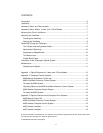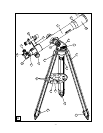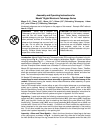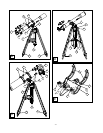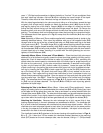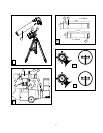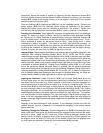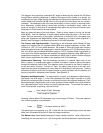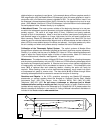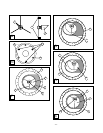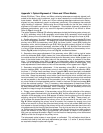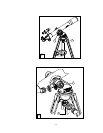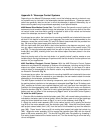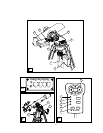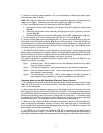
The diagonal mirror permits a comfortable 90° angle for observing sky objects with DS 60mm
through 90mm refracting telescopes; in addition the diagonal mirror results in an upright, but
reversed left-for-right, image through the telescope during terrestrial observations. Loosen the
vertical (A-14) and horizontal (A-15) locks, by turning the lock knobs about one turn counter-
clockwise. The telescope’s main tube now moves easily in either vertical or horizontal direc-
tions. Alternately, “partially-locking” these locks provides a comfortable “drag”, neither too
loose nor too tight, in the motion of the telescope tube about the vertical and horizontal axes.
Experiment to find the best lock-knob tensions.
Begin by observing easy-to-find land objects. Obtain a sharp image by turning the focuser
knob (A-16). Use the viewfinder to locate objects before observing them in the main tele-
scope. Start the observation of any object, astronomical or terrestrial, with a low-power eye-
piece (see Eyepieces and Magnification, below), stepping up to higher power eyepieces, if
desired, after the image is centered and focused in the main telescope.
The Focuser and Eyepiece-Holder: Depending on the telescope model, Meade DS tele-
scopes are supplied with an eyepiece-holder (G-4) that accepts eyepieces of either .965"
(24.5mm) or 1.25" (31.7mm) barrel-diameter. DS models of 70mm and larger also include a
separate eyepiece-holder that accepts giant, wide-field eyepieces of 2" (50.8mm) barrel-diam-
eter, such as the optional Meade MH50mm eyepiece. This 2" eyepiece-holder ring threads on
to the end of the focuser drawtube and replaces the standard eyepiece-holder (G-4) when 2"
eyepieces are employed. The focuser drawtube lock (G-5) helps to prevent focuser slippage
when heavier accessories are added to the eyepiece end of the telescope.
Astronomical Observing: With the telescope focused on a celestial object such as the
Moon, a planet, or a deep-space galaxy or nebula, the object is seen to move quite rapidly
through the telescopic field of view. This apparent motion is caused by the Earth’s rotation on
its axis once every 24 hours. To follow, or “track,” the object, place a hand on the main tele-
scope tube and move the telescope on one or both of its vertical and horizontal axes. Tracking
astronomical objects, particularly at higher powers, is greatly facilitated with the addition of a
manual or electronic telescope control system. See Appendix 2.
Eyepieces and Magnification: The magnification, or power, of a telescope is determined by
two factors: the focal length, F, of the main telescope (this focal length is printed on a label
affixed to the telescope tube or focuser), and the focal length of the eyepiece employed. Each
Meade telescope is supplied with one or more eyepieces; some models also include a Barlow
lens, described below, which doubles or triples eyepiece power. To calculate the power at
which the telescope is operating, use this formula:
Focal Length of Main Telescope
__________________________
Power =
Focal Length of Eyepiece
Example: Meade 60mm DS telescopes have a focal length of 700mm. The power obtained
with a 25mm eyepiece is calculated as:
700mm
_______
Power =
25mm
= 28 times (written as “28X”)
The optical type of an eyepiece (e.g., SR, H, MA, MH, etc.) has no bearing on power, but does
affect such characteristics as field of view and image corrections.
The Barlow Lens: Some Meade telescopes include a power multiplier called a Barlow lens.
Consisting of a lens mounted in a 4" (10cm)-long tube, the Barlow doubles or triples the power
- 10 -




